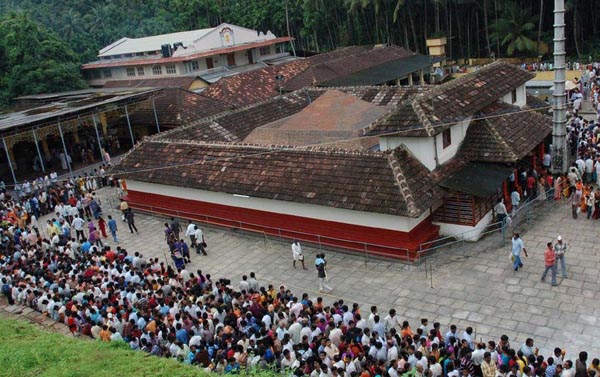Shri Anantha Padmanabha Temple

Information of Shri Anantha Padmanabha Temple, Kudupu, Dakshina Kannada, Karnataka
Sri Anantha Padmanabha Temple at Kudupu is an incarnation of Maha Vishnu Baghavan as per Hindu religion. This is a famous temple for lord Padhnabha and a pilgrim cum tourist place. This temple is also an abode for the Bana Devi, which is a goddess of Serpents. It also houses few of its sub deities of god and goddess related to this main deity in this temple complexes. The most distinct feature of this temple is its temple pond and the Sarpa Sankala. This temple is beautifully located in the base of small hill ranges and by a river side. In the monsoon season this temple and its surroundings looks very pleasant to our eyes. It is located near Kudupu Village in Dakshina Kanada District of Karnataka State in India.
Shri Anantha Padmanabha Temple Religious Significance
This temple attracts all Hindu peoples. This temple is also a great place for the Vaishnava sect in Hindus. Lord Anantha Padmanabha is the main deity here and he is known to be a powerful god. Many devotees come here to worship him and blessed by him. Devotees do have a complete worship of his sub deities too. Its sub deities found here are the Lord Ganapathy, The Subyamaniya Swamy, Jaya Durga, Vijaya Durga and Shree Devi. Few peoples with Naga Dosha (curse of snake killing in the previous birth affecting the present life) do come here annually and offer prayers and do rituals to get rid from the Naga Dosha. It is believed that by taking bath from the temple pond and offering milk and ghee to the Sarpa Sankal will clear the Dosha (sins of previous birth) forever. The day of Naga-Panchimi attracts many people with this Dosha and takes part I this mass ritual performed to Bana-Devi. The other two festive seasons are the Thene Utsava and the Anantha Chaturdasi. The Thene Utsava is a harvest festival where few paddy produce is offered to the Lord Padhmanabha and the temple give backs to its devotees as Anna Dhana (Free Food in Temple). The Anantha Chaturdasi is a special pooja function day. Here this temple is beautifully decorated with flowers and lights. Many devotees take part in this special poojas and more of all, the celebration organized here is of immense importance and is celebrated with great pomp and show. It is truly a wonderful part of the temple and more of all, the religious importance is what makes this temple of great importance among the devotees to come and offer prayer with faith in mind and hymes of mantras dedicated to the deity.
Shri Anantha Padmanabha Temple Mythology & History
This temple is also similar that of Sri Padmanabha Shetram found in Trivandrum. Here the main deity is made of pure gold and is the largest idol of Padhanabha on a sleeping position on a gaint Serpant. The Kodupu Padhanabha temple is also having the similar features and those who are not able to go to this south end of Trivandrum can visit this temple and worship here.
Shri Anantha Padmanabha Temple Architectural Significance
Sri Anantha Padmanabha Temple is found in a traditional Hindu temple style Malabar form. This temple is built in vast areas of this forest place. The main entrance is seen with three minarets on its top. It has got a small mandapa with four pillars near the entrance. There is a beautiful pond built here knows as the Bhadra Saraswathi Thirtha. This is a step pond and having a small porch with a Naga idol. This porch in the center adds a special beauty to this pond. Inside there is a main garbagraha in the west were the principal deity is kept. Its surrounds are also having few complexes for its sub deities. The unique stone art found here is of the Sarpa Sankala, which is housing 100 single stone carving of Serpents. These are very beautifully placed here and look like guards for Naga-Bana. The sub-deities are very uniquely carved on stones. There are many wood crafts also found here. An example is the Ratha, the temple chariot. Most of the inner complexes are having wooden structures and are roofed with terracotta tiles. These tiled roofs give it a traditional style in a temple.
- Andhra Pradesh Temples
- Assam Temples
- Bihar Temples
- New Delhi Temples
- Goa Temples
- Gujarat Temples
- Jammu and Kashmir Temples
- Karnataka Temples
- Kerala Temples
- Madhya Pradesh Temples
- Maharashtra Temples
- Odisha Temples
- Punjab Temples
- Rajasthan Temples
- Sikkim Temples
- Tamil Nadu Temples
- Telangana Temples
- Uttar Pradesh Temples
- Uttarakhand Temples
- West Bengal Temples